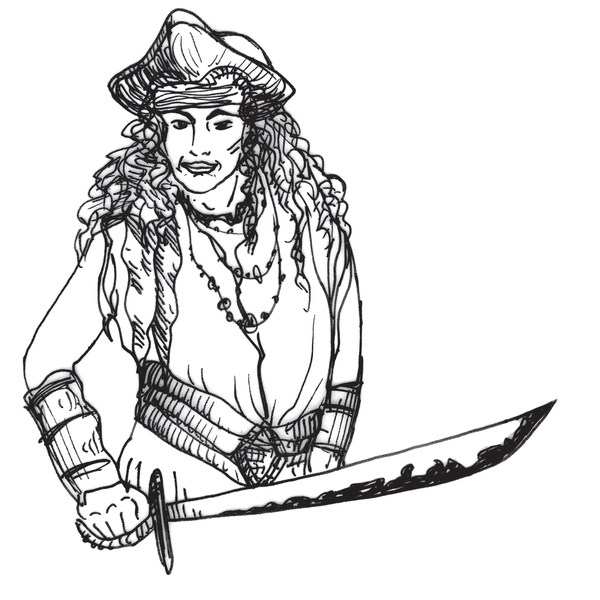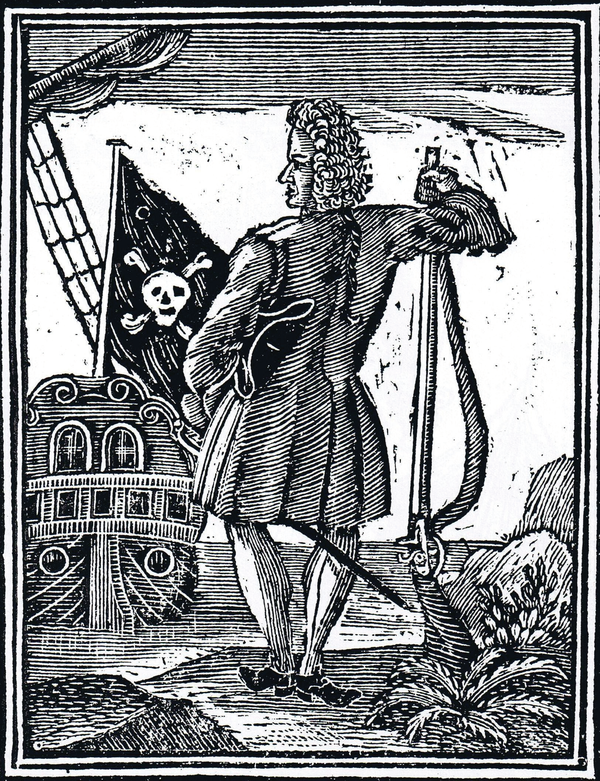We’re all familiar with the swashbuckling tales of Blackbeard and his crew. These harrowing stories of ships and their captains seizing the seas and looting crews that cross their path have captured our imaginations for decades. But these tales only cover half the story. In reality, piracy was born of a time of desperation for seamen – when work was scarce and money was short. Life aboard a ship was grueling at best, and these pirates often lived dreadfully short lives. It was daunting work. Today, we remember these pirates by their epic legacies passed down through generations. Here are five of the most famous pirates and how they left their mark on history.
Charles Gibbs
Charles Gibbs was one of final pirates of the Caribbean to be executed by the United States. Gibbs was born in Newport, Rhode Island, and started into privateering at a young age. He eventually assumed the captain role of the Maria and became known for his harsh treatment of prisoners. It was passed down in legend that he once ordered for the arms and legs to be cut from a captain he had captured. In another instance, he ordered for a crew to be burned alive on their ship. After a crash off the coast of Long Island, Gibbs and who remained of his crew came ashore. They had only been on dry land a few days when they were captured and taken as prisoners to New York City, where they were tried and convicted.
Rachel Wall

Rachel Wall is largely considered the first American-born woman to become a pirate. She came to piracy through her husband, who rescued her from an attack on the docks near her hometown of Carlisle. The two married, and Rachel became a servant while her husband spent his time on the high seas. After several months on the ocean, her husband returned with five other men and their lovers. He urged her to join them on their ship. Rachel obliged and they formed a crew of pirates.
Rachel served as the bait for most of their raids. After heavy Northeastern storms, she would stand on the ship’s deck and cry for help at passing ships. Once they stopped, the rest of her crew emerged, murdered, and robbed those on board the lured vessel. In all, the crew successfully captured 12 boats, killed 24 sailors, and stole $6,000 in cash. She was finally captured after attempting to steal a bonnet from a woman on the street and cut out her tongue. She was tried, convicted, and hung for robbery.
Samuel Burgess
Samuel Burgess started aboard the legendary William Kidd’s crew in 1690. It was here that he learned the ropes of captaining a ship. After three years on board, Burgess made his way to New York City, where he took a job helping a wealthy merchant. He made several trips to Madagascar, selling goods to pirates in exchange for gold and slaves. By 1699, Burgess has command of his own ship, the Margaret. He sailed to Cape Town, South Africa, where his ship was seized by the East India Trading Company along with all its treasure and slaves.
Burgess was tried in Cape Town but pardoned of his crimes. He later became the first mate of the Neptune. When the ship wrecked off the coast during a storm, Burgess assisted John Halsey in taking over the crew and ship. But when Captain Halsey died in 1708, Burgess lost his position and remained in Madagascar. He died suddenly of poison after a dispute with a local chief about trading prices.
Stede Bonnet

Born in Barbados, Stede Bonnet was often referred to as the “gentleman pirate” in reference to his wealthy land-owning life before becoming a pirate. He inherited his family’s estate after his father’s death in 1694, and married in 1701. Bonnet took up piracy in 1717 after several years of marital problems, despite having no prior sailing experience. He bought a ship, named it Revenge, and set out to the high seas.
For a short time, Bonnet joined the notorious Blackbeard’s crew aboard the Queen Anne’s Revenge. By 1718, he had some command over the ship. Together Bonnet and Blackbeard looted countless ships sailing to and from the Caribbean. In August 1718, Bonnet tied his ship at Cape River Fear for repairs. Here, he was attacked by a naval expedition concocted by the South Carolina governor. Bonnet and his men were arrested and brought to trial. The pirate was convicted and hanged in December of that year.
Thomas Paine
Thomas Paine became widely known for his participation in the raiding of several Spanish settlements throughout the late 17th century. He was commissioned by Jamaica’s governor to attack and rob other pirates. By 1693, he had joined up with a handful of other privateers to raid the Spanish town of St. Augustine, Florida. Paine led a crew of 60 men while commanding an 8-gun barque, a type of ship, named the Pearl.
For many years, Paine sailed on French ships. However, upon returning to Rhode Island, he learned he was wanted for breaking the peace treaty between Spain and England. Paine managed to evade capture, and eventually entered semi-retirement, working in the cargo and resailing for pirates, including the notorious Captain William Kidd.
Choosing to live a life of crime on the open seas was not for the faint of heart. Pirates lived treacherous and often brief lives. Their tales of triumph and woe inspired some of the greatest piracy legends to date.

